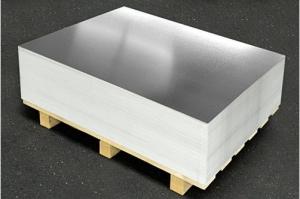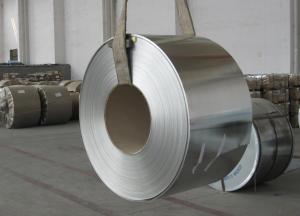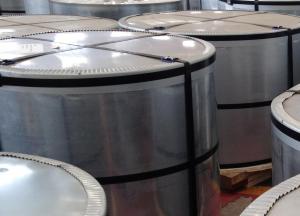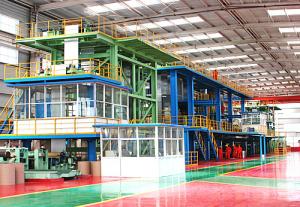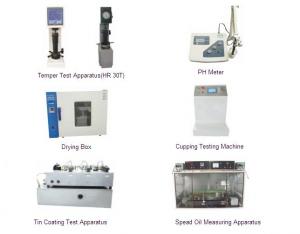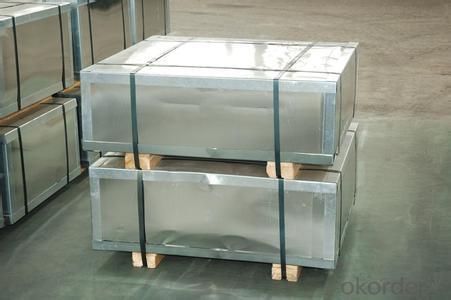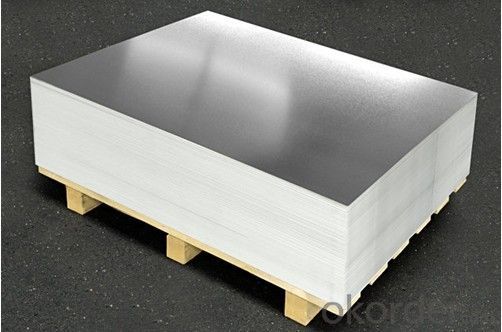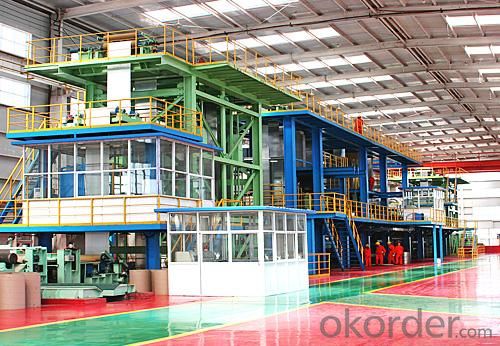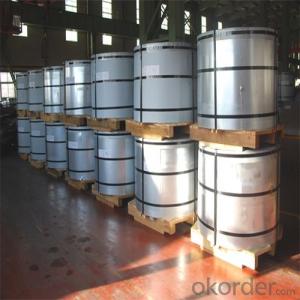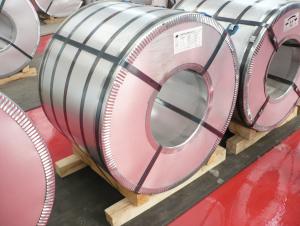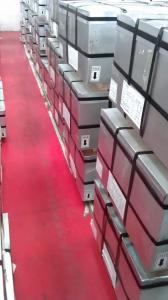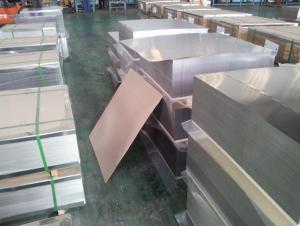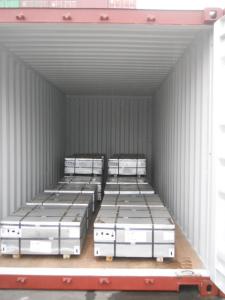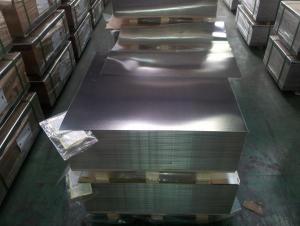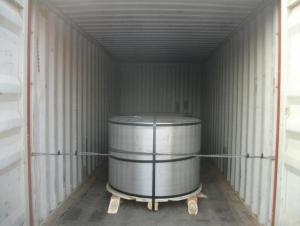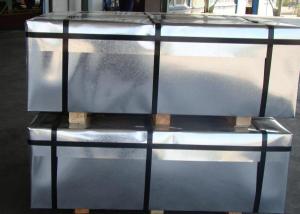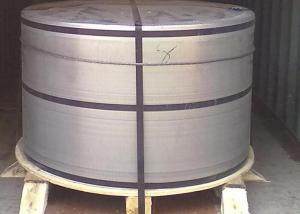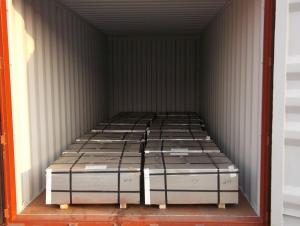Tinplate For Chemical Use-CHBA
- Loading Port:
- China Main Port
- Payment Terms:
- TT or L/C
- Min Order Qty:
- 20 Tons ~25 Tons m.t.
- Supply Capability:
- 40000 MT Per Month m.t./month
OKorder Service Pledge
OKorder Financial Service
You Might Also Like
General information of Tinplate For Chemical Use
|
Steel Type |
SPCC |
|
Temper (BA&CA) |
T1~T5, DR8 |
|
Coating |
2.8~8.4g/m2 |
|
Thickness & Tolerance |
0.15~0.5mm (Tolerance:±0.01mm) |
|
Width & Tolerance |
600~1000 mm(Tolerance: +2/-0mm) |
|
I.D |
508 MM |
|
Coil Weight |
3~10 MT |
|
Passivation |
311 |
|
Oiling |
DOS |
|
Surface Finish |
Bright ,Stone ,Silver ,Matte |
|
Min Order |
25 Tons for 1 20 feet FCL |
|
Package |
Seaworthy Export Standard Wooden Pallet |
|
Standard Available |
GB/T2520-2000, JIS G3303, ASTM A623, BS EN10202 |
|
Lead Time |
35 days after receiving buyer's original L/C or Prepayment |
|
Special specifications are available on customers' requirements. | |
Technical data of Tinplate For Chemical Use
|
Chemical Composition(%) |
Mechanical Property |
|
C:0.04~0.06 |
Yield Strength: (Mpa):280~320 |
|
Si:0.01~0.03 |
TensileStrength: (Mpa):340~390 |
|
Mn:0.18~0.22 |
Elongation:20%~30% |
|
P:0.014~0.016 |
------------- |
|
S:0.006~0.009 |
Application of Tinplate For Chemical Use
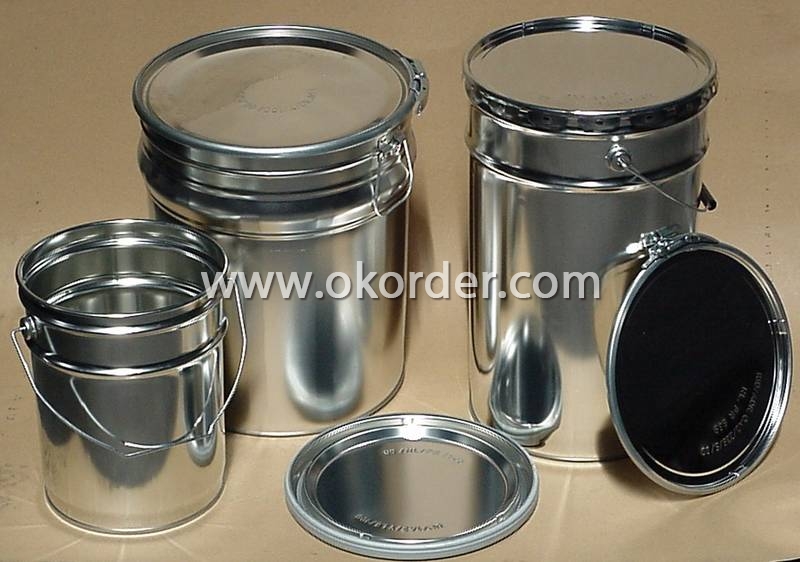
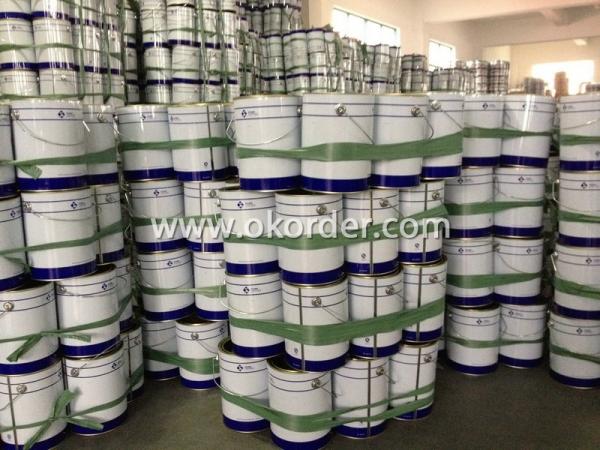
Tinplate is widely used for making all types of containers such as artistic cans, tea cans,
painting cans, chemical package cans and metal printing etc. Its applications are
not limited to containers; recently, tinplate has also been used for making
electrical machinery parts and many other products.
Equipment and Facility
Tin Coating Line
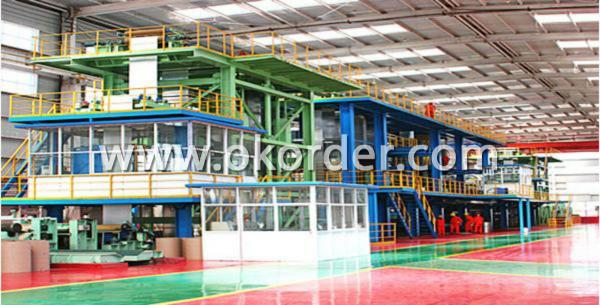
Cold Rolling Mill Batch Annealing Furnaces
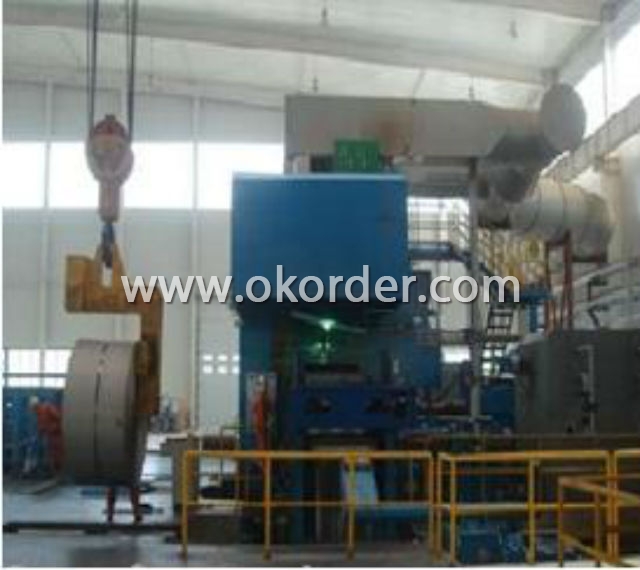
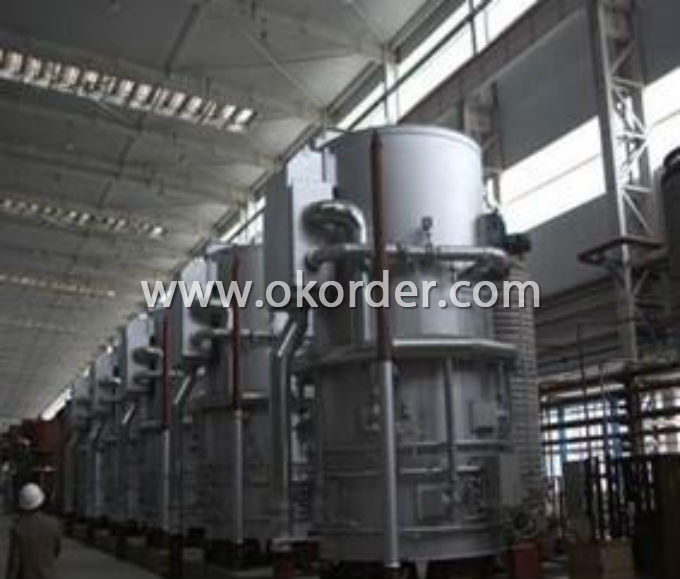
Cutting Line Stock Area
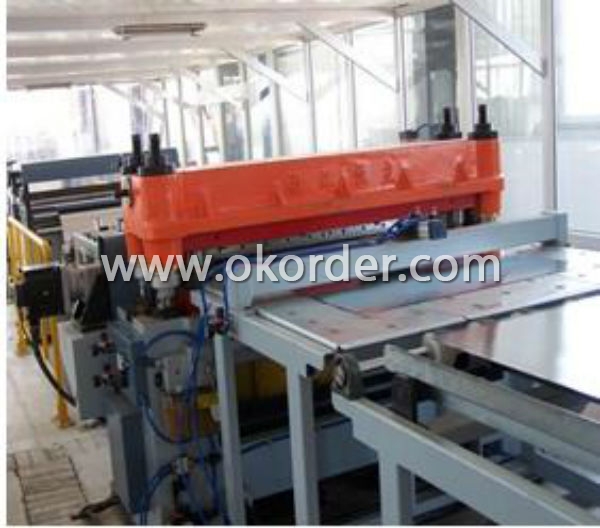
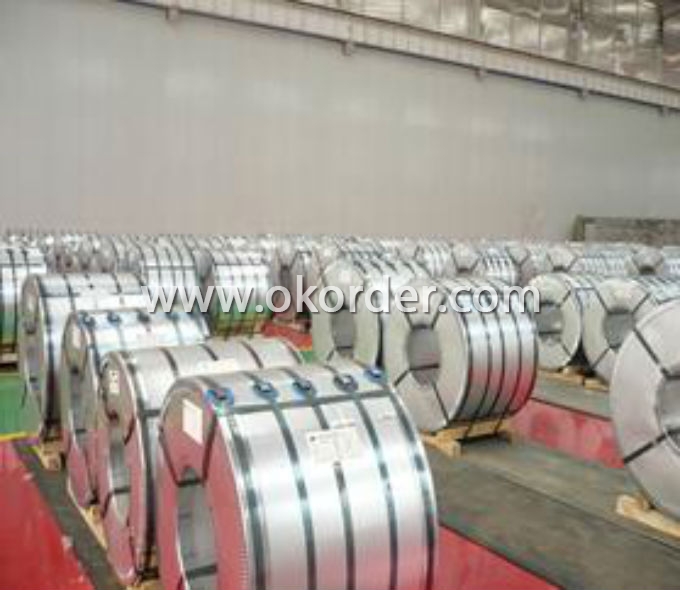
Quantity Control System
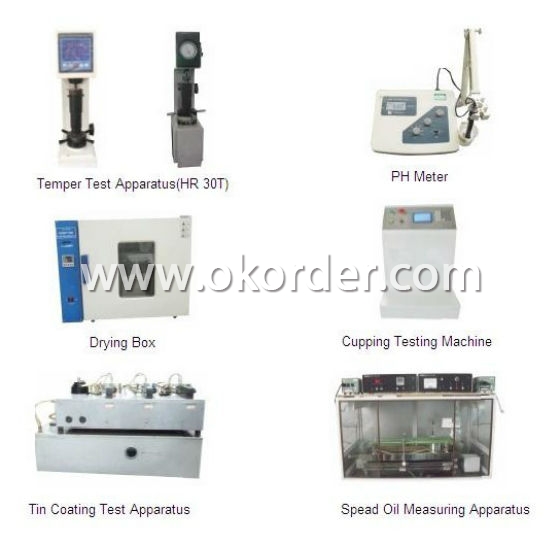
- Q: What are the main regulations governing tinplate production?
- The main regulations governing tinplate production vary depending on the country and region. However, some common regulations include standards for the composition of the tinplate, such as the maximum allowable levels of impurities and the required thickness of the tin coating. Other regulations may focus on safety measures, including guidelines for handling hazardous materials used in the production process. Additionally, environmental regulations often require tinplate manufacturers to comply with waste management and emissions control standards to minimize the impact on the environment.
- Q: How do you solve the water stains on the tinplate?
- The root damage is caused by waterlogging, and the transport of water and nutrients is a problem. Of course, the unnecessary dead leaves are cut off
- Q: Is tinplate safe for food contact?
- Yes, tinplate is safe for food contact. It is widely used in the packaging industry for food and beverage cans as it provides a protective barrier that prevents contamination and preserves the quality and safety of the food inside.
- Q: How does tinplate contribute to the functionality of household goods?
- Tinplate contributes to the functionality of household goods by providing a durable and corrosion-resistant coating that protects the underlying material from damage and extends the lifespan of the product. Additionally, tinplate's ability to be easily molded into various shapes and sizes allows for the creation of intricate designs and structures, enhancing the aesthetics and functionality of household items.
- Q: Can tinplate be used for non-food products?
- Yes, tinplate can be used for non-food products. Tinplate is a versatile material commonly used in various industries such as automotive, electronics, packaging, and construction. It offers excellent corrosion resistance and durability, making it suitable for non-food applications like cans for paints, aerosols, chemicals, and other industrial products.
- Q: Can tinplate be painted or printed on?
- Yes, tinplate can be painted or printed on.
- Q: What are the advantages of using tinplate for promotional items?
- There are several advantages of using tinplate for promotional items. Firstly, tinplate is highly durable and long-lasting, ensuring that promotional items made from it will have a longer shelf life. Secondly, tinplate can be easily molded into various shapes and designs, allowing for creative and eye-catching promotional products. Additionally, tinplate is lightweight and easy to transport, making it convenient for distributing promotional items at events or sending them through mail. Furthermore, tinplate has a smooth and glossy surface, perfect for printing logos, brand names, or messages, enhancing the visibility and effectiveness of promotional campaigns. Overall, the use of tinplate for promotional items offers durability, versatility, portability, and visual appeal, making it a valuable choice for businesses.
- Q: What are the typical production volumes for tinplate?
- The typical production volumes for tinplate vary depending on the demand and market conditions, but generally speaking, millions of tons of tinplate are produced annually worldwide.
- Q: How does tinplate contribute to the reliability of telecommunications devices?
- Tinplate contributes to the reliability of telecommunications devices by providing a durable and corrosion-resistant coating that protects the inner components from external factors such as moisture, humidity, and oxidation. This protection helps to prevent damage or malfunctioning of the devices, ensuring consistent and reliable performance.
- Q: Can tinplate be used for signage and displays?
- Yes, tinplate can be used for signage and displays. Tinplate is a versatile material that is strong, durable, and resistant to corrosion, making it suitable for outdoor and indoor applications. Additionally, it can be easily formed into various shapes and sizes, allowing for creative and visually appealing signage and display designs.
1. Manufacturer Overview
| Location | Hebei,China |
| Year Established | 2009 |
| Annual Output Value | Above US$100 Million |
| Main Markets | North America;South America; Eastern Europe Southeast Asia; Africa; Mid East Eastern Asia; Western Europe; Central America Northern Europe; Southern Europe; Domestic Market |
| Company Certifications | HACCP;ISO 9001:2008;ISO 14001:2004 |
2. Manufacturer Certificates
| a) Certification Name | |
| Range | |
| Reference | |
| Validity Period |
3. Manufacturer Capability
| a) Trade Capacity | |
| Nearest Port | Tianjin |
| Export Percentage | 11% - 20% |
| No.of Employees in Trade Department | 6-10 People |
| Language Spoken: | English;Chinese |
| b) Factory Information | |
| Factory Size: | Above 270,000 square meters |
| No. of Production Lines | Above 12 |
| Contract Manufacturing | OEM Service Offered |
| Product Price Range | High;Average |
Send your message to us
Tinplate For Chemical Use-CHBA
- Loading Port:
- China Main Port
- Payment Terms:
- TT or L/C
- Min Order Qty:
- 20 Tons ~25 Tons m.t.
- Supply Capability:
- 40000 MT Per Month m.t./month
OKorder Service Pledge
OKorder Financial Service
Similar products
Hot products
Hot Searches
Related keywords
